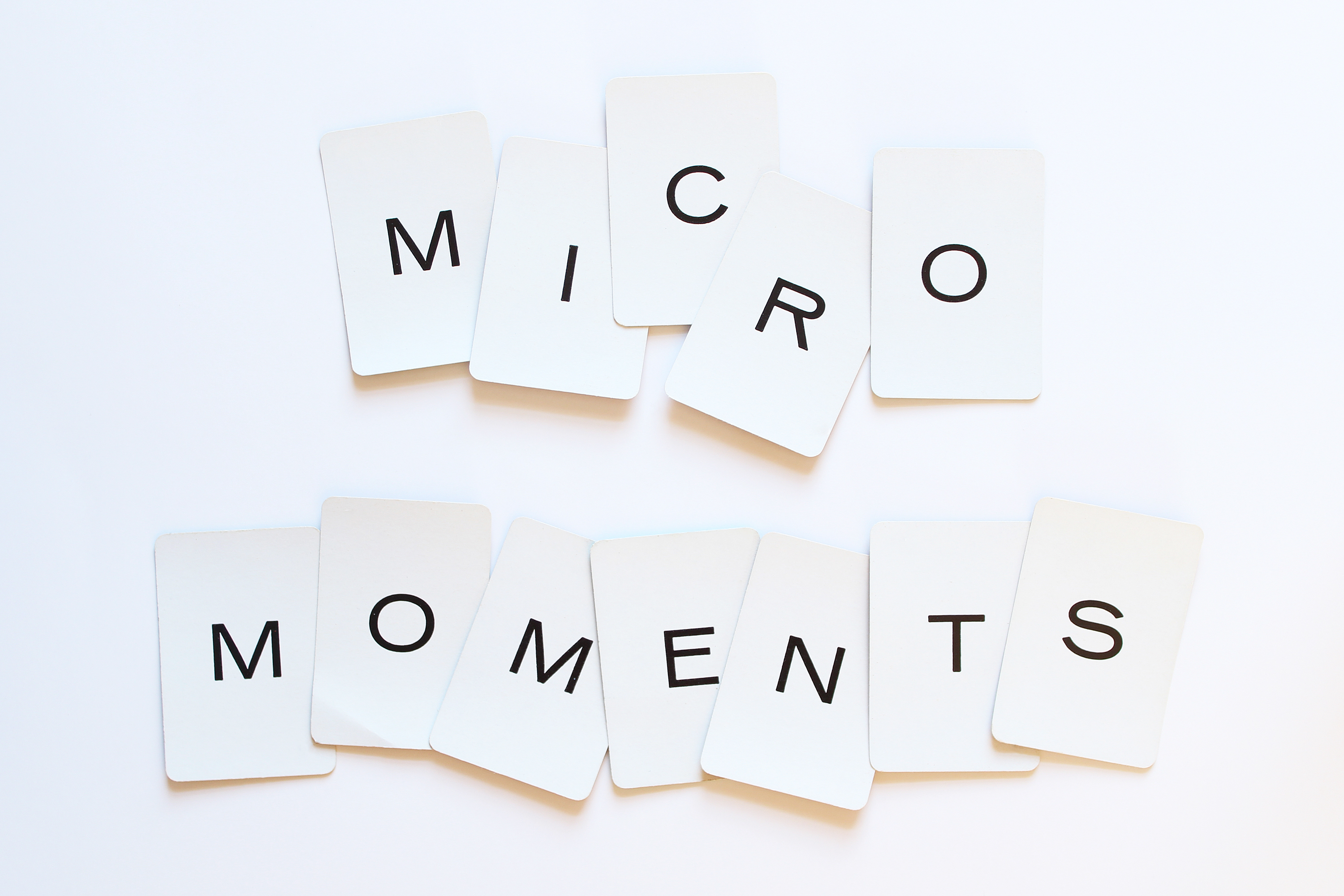
25 Apr What You Need to Know about the Micro-Moments Marketing Model
During some downtime, a bride-to-be has an idle thought: “Maybe we should honeymoon in the Caribbean.” She pulls out her smartphone and does a search for “Caribbean resorts.” This act, automatically reaching for a device to get instant answers, is a micro-moment. At this moment, the bride will gather new information, learn about all-inclusive resorts, and then, maybe, follow a link touting Caribbean cruises. She will form preferences, share her findings with her fiancée and her maid-of-honor, and she might send her contact information to a travel agent in exchange for more information.
This is how consumers behave in the hyperconnected world of mobile devices. 95% of Americans own a cell phone and 25% say they are “almost constantly” online. Researching, discovering and buying products and services is done in small bits throughout the day, rather than with one sit-down session in front of a desktop computer. The marketers that are able to recognize user intent and provide assistance with whatever mission a user has embarked upon will generate new leads, earn new fans and, eventually, add new customers to their base.
An Individualized Buying Journey
The traditional marketing funnel assumes prospective customers will follow a path that begins with a general awareness of a product or brand and ends with a narrow objective, a sale. In the past, marketing efforts focused on nudging buyers along their journey. Mobile devices have changed this path.
A Google study of thousands of users’ clickstreams revealed that no two customers followed the same path. Some conduct extensive research. Others quickly narrow their search to a particular brand or product. Some move between brand websites and review sites. While buyer personas are still important for developing campaigns, marketers need to adjust their strategy to reach individuals within a target group and serve up appropriate content at the instant the user is searching for it.
Understanding Intent
Consumers open a browser with specific goals, and marketers must discern user intent and serve up content to meet that micro-moment need. The bride-to-be that enters the search term “best Caribbean islands for a honeymoon” will respond to image-filled content about romantic destinations. The bride-to-be that searches for “Caribbean vacation packages” is looking for prices. The smart travel agency will be sure to create content that provides these users with the desired information and offers the next step in their journeys, whether that be a link to a video or a landing page designed to collect an email address.
Meeting Micro-moments in a Digital Marketing Strategy
To reach your target, identify the points where your potential customers will most likely intersect with your brand. It will be across multiple channels — websites, social media, email messages— accessed from mobile devices and desktop computers. Traditional media — television, radio, and print — also play a part. A TV ad or outdoor billboard may cause a consumer to reach for their smartphone and investigate further.
Be Quick, Be Relevant
When you have determined where to find your market, eliminate any barriers users may have to learn more about your brand. Barriers may include confusing, difficult-to-navigate websites or content that is not easily consumed on mobile devices. People expect user-friendly interfaces and have little patience for outdated websites. They move in and out of the stages of a buying journey as fast as their internet connection allows. Consumers may begin with an intent to research and along the way discover new products, services, and brands. They may be in the final stages of their journey, comparing product features, prices, and reviews. Marketers have only a few seconds to capture a user’s interest, and no matter how slick the production, if the content does not deliver value by answering consumer questions, the consumer will move on.
The key to successfully marketing to users in micro-moments is to reach them where they are with the information they want at the moment. Offer visitors content that is relevant to their search and engages them with useful and entertaining information. Helpful eBooks, entertaining and informative videos and data-rich infographics can meet users’ need to learn, to do, and to buy. Be warned that pushing a consumer toward a sale while they are still researching may drive them away. A “book your Antigua vacation now!” message will only annoy someone who is researching the differences between the Eastern, Western and Southern Caribbean. If your content is valuable and helps users with their research, you will have mastered the micro-moment.
